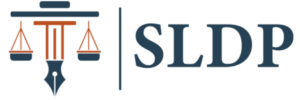Project Cycle Management (PCM) is a comprehensive framework designed to guide programming through programmatic processes and methods with a view to strengthening humanitarian action in terms of both quality and accountability.250 PCM provides a structured approach to project management where the various phases are complementary and interdependent.
The PCM typically consists of five core steps:
- Initial (Understanding the context) phase: This initial phase involves gathering and analyzing information about the operational environment, including political, economic, social, and cultural factors.251 It sets the foundation for all subsequent decisions and actions.
- Assessing and analyzing the situation: This step involves a detailed examination of the specific issues, needs, and opportunities within the project’s scope. It includes stakeholder analysis, problem analysis, and the identification of objectives.252
- Planning programme response: Based on the analysis, this phase involves developing a comprehensive project plan, including objectives, activities, resources, timelines, and indicators for monitoring and evaluation.253
- Implementing and monitoring response: This phase involves carrying out planned activities while continuously monitoring progress against established indicators. It requires regular data collection, analysis, and reporting to inform decision-making.254
- Evaluating and learning from experience: The final phase involves assessing the project’s outcomes and impacts, identifying lessons learned, and using these insights to inform future programming.255
Each of these phases is interconnected, forming a cycle that promotes continuous learning and improvement. The PCM approach emphasizes the importance of stakeholder participation throughout the project lifecycle, ensuring that interventions are relevant, effective, and sustainable.256
In the context of human rights-based programming, PCM provides a structured framework for integrating human rights principles and standards at every stage of the project cycle. This integration ensures that human rights considerations are not an afterthought but are central to project design, implementation, and evaluation.257 By systematically applying PCM principles, organizations can enhance their ability to deliver effective, rights-based humanitarian interventions that address root causes of problems and contribute to sustainable development outcomes.258 259
250. Alliance for Child Protection in Humanitarian Action, Minimum Standards for Child Protection in Humanitarian Action, (2019), available at <https://alliancecpha.org/en/>
251. European Commission, Project Cycle Management Guidelines (2004) available at <https://international-partnerships.ec.europa.eu/document/download/f7ed20c4-5fc2-4ed7-b54c-0805e4ed952d_en?filename=methodology-aid-delivery-methods-project-cycle-management-200403_en.pdf>
252. Rachel Blackman, Project Cycle Management, (2003), available at <https://www.pm4dev.com/resources/manuals-and-guidelines/124-project-cycle-management-tearfund/file.html>
253. Greta Jensen, The Logical Framework Approach: Project Planning & Management, (2012), available at <https://www.pm4dev.com/resources/documents-and-articles/99-logical-framework-approach-sida/file.html>
254. Stephen Biggs and Sally Smith, ‘A Paradox of Learning in Project Cycle Management and the Role of Organizational Culture’, (2003), available at <https://www.sciencedirect.com/science/article/abs/pii/S0305750X03001438>
255. Oliver Bakewell and Anne Garbutt, The Use and Abuse of the Logical Framework Approach, (2005), available at <http://pdf2.hegoa.efaber.net/entry/content/909/the_use_and_abuse_SIDA.pdf>
256. Project Cycle Management (n 250).
257. OHCHR, Frequently Asked Questions on a Human Rights-Based Approach to Development Cooperation, (2006), available at <https://unsdg.un.org/resources/frequently-asked-questions-human-rights-based-approach-development-cooperation>
258. UNDP, Handbook on Planning, Monitoring and Evaluating for Development Results, (2009), available at <https://mandeguidelines.iom.int/sites/g/files/tmzbdl2306/files/2023-03/pme-handbook.pdf>
259. Sustainable Development Goals (SDGs) are a set of 17 interconnected global objectives established by the United Nations in 2015 as a universal blueprint to achieve a more sustainable future for all by 2030. These goals serve as a framework for addressing global challenges including poverty, inequality, climate change, environmental degradation, peace, and justice.




